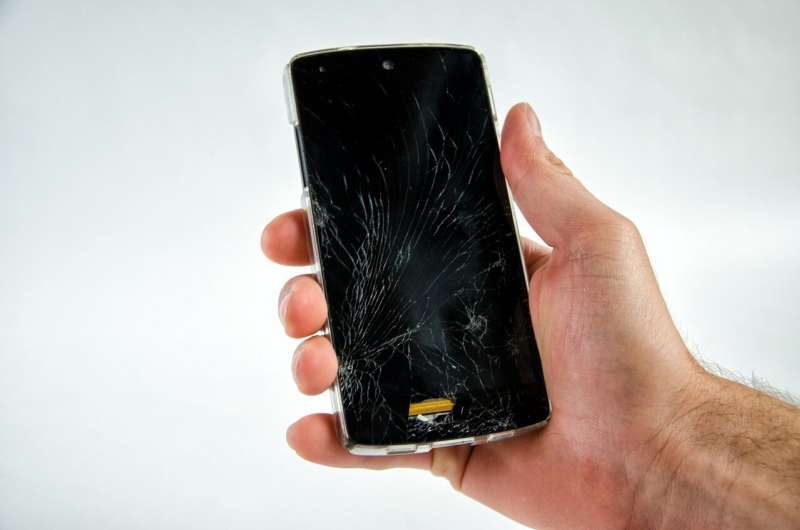Researchers develop self-healing polymers for cracked cellphone screens

If you’re like most cellphone users, at one point you have experienced a cracked screen.
This pesky problem can be frustrating to live with, and it’s pricey to fix.
Two Concordia researchers from the Oh Research Group in the Faculty of Arts and Science are looking at ways to “self-heal” your cellphone, and their research could have broader implications as well.
Turning down the heat
“One of the major difficulties in these types of projects is to maintain a balance between the mechanical and self-healing properties,” explains Ph.D. candidate Twinkal Patel (BSc 17), first author on the paper “Self-Healable Reprocessable Triboelectric Nanogenerators Fabricated with Vitrimeric Poly(hindered Urea) Networks,” published in ACS Nano.
Patel says this research stands out from similar work on the topic because of its focus on temperature.
“Our goal is to not compromise the toughness of the network while adding dynamic ability to self-heal damage and scratches. We focus on achieving complete healing of scratches at just room temperature. This feature sets our research apart from others.”
Saving time and money
The team created self-healing polymer networks through very simple synthetic routes. The developed materials demonstrated excellent results at room temperature.
“These materials can quickly repair damages and cracks due to the self-healing mechanism,” says Pothana Gandhi Nellepalli, Horizon postdoctoral fellow and co-author on the paper.
“As a result, these materials save consumers time and money while also extending the lifespan of the material used and reducing environmental burden.”
Life in the Oh lab
Patel is quick to credit the project’s success to the Oh Research Group, led by John Oh, professor and Canada Research Chair (Tier II) in Nanobioscience in the Department of Chemistry and Biochemistry.
“Working here has been a great experience. During my time here I have met amazing and supportive members who have made this lab feel like a second family,” she says.
“I am very thankful for the mentorship I received from my supervisor to publish my first paper. I feel accomplished to see the hard work I’ve done be published.”
What else can this technology do?
“In the future, I would like to use self-healing polymer networks for improving the battery life of triboelectric nanogenerators,” Patel adds.
This technology allows a device to store energy and convert it into electricity when repeated movement is applied—think of LED lights that are activated when you pass by.
“This same technology could definitely be used to extend the lifespan of cellphone batteries. In the future, we would be able to charge them just by walking.”
How to power electronics using mechanical motion
Twinkal Patel et al, Self-Healable Reprocessable Triboelectric Nanogenerators Fabricated with Vitrimeric Poly(hindered Urea) Networks, ACS Nano (2020). DOI: 10.1021/acsnano.0c03819
Citation:
Researchers develop self-healing polymers for cracked cellphone screens (2021, October 18)
retrieved 18 October 2021
from https://phys.org/news/2021-10-self-healing-polymers-cellphone-screens.html
This document is subject to copyright. Apart from any fair dealing for the purpose of private study or research, no
part may be reproduced without the written permission. The content is provided for information purposes only.
For all the latest Science News Click Here
For the latest news and updates, follow us on Google News.

